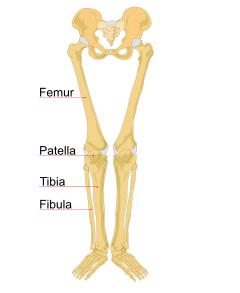[embedyt] https://www.youtube.com/watch?v=GBoKj1DTPPY[/embedyt]
The video above is a pose I simply call Tight Hip Release. To see the value of lying on your back for a long time doing pretty much nothing takes some explanation. In yoga when we refer to a hip opener or a shoulder opener we are talking about moving the extremity (either arm or leg) in opposition to a stable trunk. This pose, when done successfully, can go a long way to releasing your tight hip over time and will also help with a release of the psoas major muscle.
When I lie down on my back and cross my leg over my thigh one of two things are going to happen. Either the pelvis will stabilize through the core, so that when the leg moves out to the side and hopefully down, the pelvis will not turn with it. If the pelvis does not stabilize, the hip and the leg simply turn together towards the floor. It is not as if nothing is happening but what is happening is not doing anything to create a greater range of motion in the hip socket.
 The femur bone of the leg moves on an angle from the hip socket to the knee. The neck of the bone turns back in towards the mid line of the body ; at the very top is a ball that inserts into the hip socket. It is therefore referred to as a ball and socket joint and it is capable of a great deal of movement and rotation. The knee joint for example is a hinge that has a very limited range of motion compared to the very free ball and socket of the hip.
The femur bone of the leg moves on an angle from the hip socket to the knee. The neck of the bone turns back in towards the mid line of the body ; at the very top is a ball that inserts into the hip socket. It is therefore referred to as a ball and socket joint and it is capable of a great deal of movement and rotation. The knee joint for example is a hinge that has a very limited range of motion compared to the very free ball and socket of the hip.
Someone who has “open” hips has access to a great deal of the ball and sockets range of motion. There are many reasons why someone has tight hips, almost always due to muscular tightness or imbalance. The list of muscles that affect the hips are endless- our favorites- psoas and piriformis often take center stage. The inner thighs, especially pectineus, can have a profoundly limiting effect on the hip socket; quadratus femoris, the tensor fascia latae etc. The possibilities for tightness are endless.
We need oppositional force to achieve an opening of the hip. This is a great thing because once we understand the concept, hip opening in this pose can also become some major core work as solidifying the trunk to prevent the pelvis from turning with the leg can require a great deal of effort— effort that is well worth effecting and developing.
Try this pose and see how high your knee is when your core is stable and you are on your back with weight distributed evenly on both sit bones. This will tell you a great deal about the relative tightness of your hips.
***
